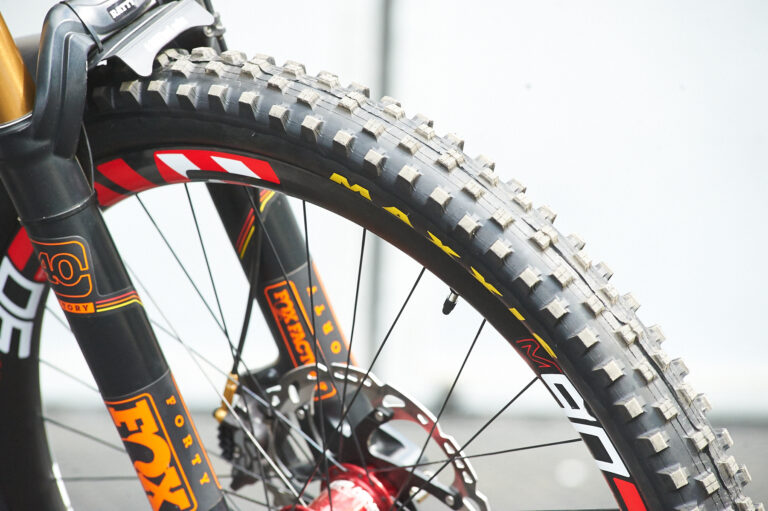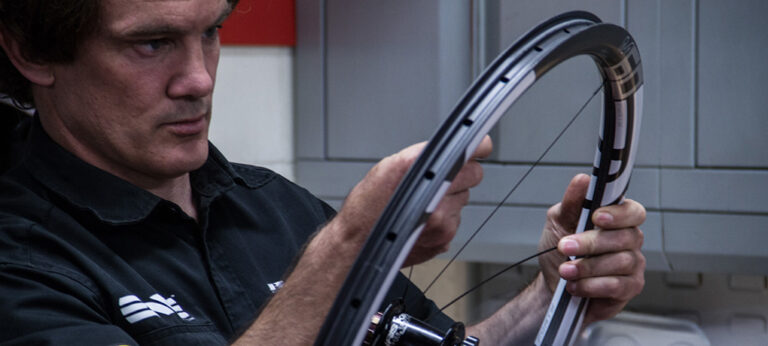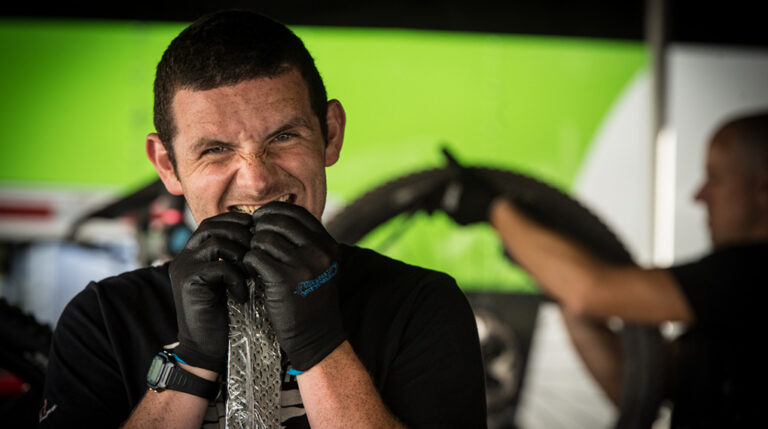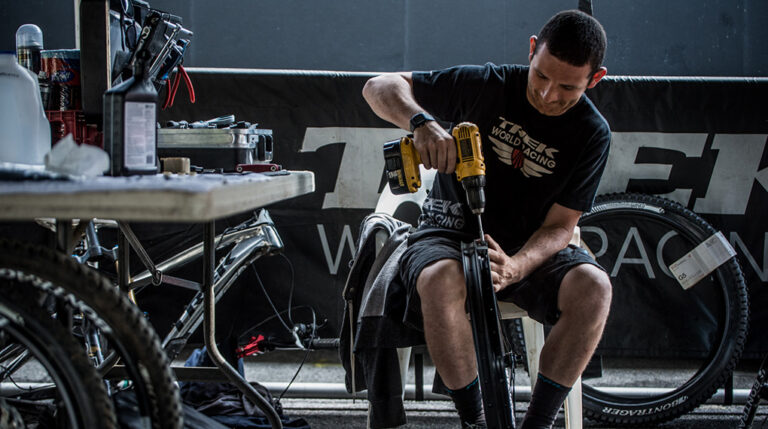
Cross-country race tyres
Racing is all about going as fast as possible and we spare no expense to do this. Race tyres generally fall into two categories: as little tread as possible or a full-on mud pattern. Why? Because a narrow tyre with smaller and tighter tread pattern for dry conditions offers much less rolling resistance.
Narrow (around 1.7in), aggressive mud tyres are found almost exclusively on the racing circuit but these are tyres that will cut right through the crud and still offer up acres of grip. Only thing is, narrow tyres don’t offer much cushioning. Remember, racing is all about going as fast as you can for a few hours. If you are racing over larger distance then you need to look at a bigger tyre for better cushioning.
Having said all that, if you ride in an area that makes you live in fear of clogging up your bike during the wet seasons (horrible wet chalk or clay, muddy going etc) then a narrow, mud-specific tyre will certainly help you cope.
Rider weight
Remember that lightweight tyres usually have thinner walls? Well, if you’re a big unit then you might want to look at something with stiffer side walls to reduce the chances of pinch flats. This is going to add rotational weight of course, but there’s the compromise again.
Cost
Less is more. Expect to pay a premium for lightweight folding tyres. If you are on a budget then look for tyres with cheaper wire beads that have the same tread as your preferred lightweight option. The difference is only a couple dozen grams, which might matter to a racer, but is not vital for general riding. [As pointed out in the comments below, the difference can be around 100g, so if weight matters to you, then folding tyres make sense. – Ed]
Setting up and looking after your tyres
Check to see whether your tyres are directional; or even if they are front or rear specific. Some tyres might have tread blocks with chamfered leading edges on the front tyre for less rolling resistance, with a square block pattern at the rear for grip.
There will be an arrow on the side walls indicating the direction of travel. The side walls should also be marked with the minimum and maximum tyre pressure. Inflate them to a pressure somewhere between the two unless you are certain you know what you’re doing.
Rider weight, ride conditions, and terrain will all play their part in how much air you put in your tyres. Too little pressure will make the tyre slow, and increase the chance of pinch flats. Too much pressure will reduce traction as there will be less tread in contact with the ground. Rolling resistance will be lower for sure, but the ride will be harsher. You’re less likely to get a pinch flat though.
It’s worth buying a floor pump with a good gauge or even a separate gauge so you can experiment with pressure. As little at 2 or 3 psi can make a difference to the ride and performance.
Conclusion
It’s worth putting some thought into your tyre selection, especially if you are serious about your mountain biking. A great place to start is to read the tyre reviews here at Bikemagic, look at what your fellow riders are using; watch and see how they get on, or talk to your local specialist bike shop. There are plenty of great tyres out there these days and the choice seems to grow by the day.





